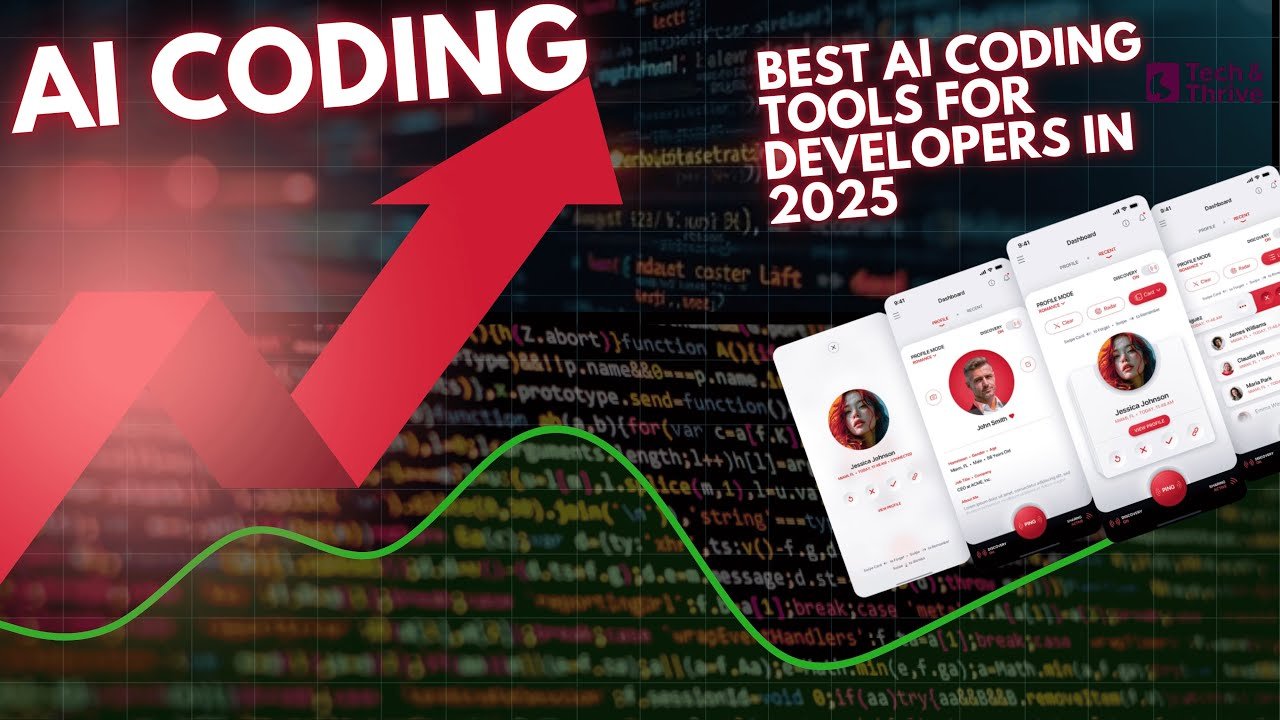Introduction: How to Use AI to Choose Right UX Methods
Selecting the right UX research method is often one of the most challenging aspects of the design process. With dozens of methodologies available—from usability testing and user interviews to card sorting and eye-tracking studies—UX researchers and designers frequently face decision paralysis. The stakes are high: choosing the wrong method can lead to wasted resources, misleading data, and ultimately, products that fail to meet user needs.
In 2025, this challenge has grown even more complex as the UX landscape continues to evolve rapidly. However, there’s a powerful ally emerging in this space: artificial intelligence. AI is transforming how UX professionals approach method selection, offering data-driven insights that can help navigate this critical decision-making process.
This comprehensive guide explores how AI can be leveraged to select the most appropriate UX research methods for your specific project needs, ensuring more effective research outcomes and better user experiences.
Understanding UX Research Methods in 2025
Before diving into how AI can help with method selection, it’s essential to understand the current landscape of UX research methods. In 2025, UX research methods generally fall into several categories:
Attitudinal vs. Behavioral Methods
- Attitudinal methods focus on what users say: surveys, interviews, focus groups
- Behavioral methods focus on what users do: usability testing, A/B testing, analytics
Qualitative vs. Quantitative Methods
- Qualitative methods provide rich, detailed insights: contextual inquiry, diary studies
- Quantitative methods provide numerical data: analytics, surveys with closed questions
Research Phase Categories
- Exploratory methods for understanding user needs: interviews, ethnographic studies
- Generative methods for ideation: card sorting, participatory design workshops
- Evaluative methods for testing solutions: usability testing, heuristic evaluation
Modern UX research is increasingly embracing mixed-method approaches, combining multiple techniques to gain more comprehensive insights. This complexity makes method selection even more challenging—but also creates an opportunity for AI to provide meaningful assistance.
The AI Revolution in UX Research
Artificial intelligence has rapidly transformed many aspects of UX research, automating tedious tasks and uncovering insights that might otherwise remain hidden. According to a 2024 survey by User Interviews, 78% of UX researchers now use AI tools in some capacity, with method selection being an emerging application. User Interviews
The AI revolution in UX research is characterized by several key developments:
1. Natural Language Processing (NLP)
AI-powered NLP tools can analyze vast amounts of user feedback, identifying patterns and themes that inform method selection.
2. Predictive Analytics
Machine learning algorithms can predict which research methods are likely to yield the most valuable insights based on project parameters.
3. Automated Analysis
AI can process data from previous research projects to identify which methods were most effective for similar challenges.
4. Decision Support Systems
AI-driven decision trees and recommendation engines can guide researchers through the method selection process.
As AI continues to evolve, its role in UX research is expanding beyond simple automation to become a strategic partner in research planning and execution.
Why Traditional UX Method Selection Is Problematic
Traditional approaches to UX method selection often rely heavily on the researcher’s previous experience, preference, or simply what’s familiar. This approach has several inherent challenges:
Subjective Decision-Making
Without data-driven guidance, method selection can be highly subjective, leading to inconsistent research quality.
Resource Constraints
Time and budget limitations often dictate method choice rather than suitability for the research question.
Complexity Management
With dozens of potential methods and combinations, manually evaluating all possibilities becomes overwhelming.
Knowledge Gaps
Many teams lack comprehensive knowledge of all available research methods and their specific applications.
These challenges highlight why an AI-assisted approach to method selection can provide significant value to UX professionals.
How AI Can Transform UX Method Selection
AI offers unique capabilities that can revolutionize how UX professionals select research methods:
Data-Driven Decision Making
AI can analyze data from thousands of past research projects to identify which methods have been most effective for similar research questions or contexts.
Project Parameter Analysis
By evaluating factors such as project timeline, budget, target audience, and research goals, AI can recommend methods that fit within specific constraints.
Elimination of Bias
AI can help reduce the tendency to default to familiar methods by objectively evaluating all potential options.
Continuous Learning
Machine learning algorithms improve over time as they analyze more research projects and outcomes, making recommendations increasingly accurate.
Customized Recommendations
AI can provide personalized method recommendations based on a team’s unique capabilities, past successes, and available resources.
By leveraging these AI capabilities, UX professionals can make more informed decisions about research methodology, leading to more effective research outcomes.
A Framework for AI-Assisted UX Method Selection
To effectively leverage AI for UX method selection, consider this structured framework that combines the strengths of AI with human expertise:

1. Research Question Definition
Start by clearly articulating your research questions using natural language. AI can help refine these questions and identify key variables that will influence method selection.
2. Constraint Mapping
Input your project constraints (time, budget, participant access, etc.) into the AI system to establish practical boundaries for method selection.
3. Goal Prioritization
Rank your research goals in order of importance. AI can help identify potential trade-offs between different methods based on these priorities.
4. Method Recommendation
Allow the AI to generate recommended methods based on your inputs, drawing from its database of past research projects and outcomes.
5. Combination Analysis
AI can suggest effective combinations of methods that provide complementary insights and address different aspects of your research questions.
6. Human Validation
Review AI recommendations critically, applying human expertise to evaluate the suggestions in your specific context.
7. Iteration Planning
Use AI to develop an iterative research plan that evolves as initial findings emerge, suggesting follow-up methods based on preliminary results.
This framework harnesses AI’s analytical power while preserving the irreplaceable value of human judgment in the final decision-making process.
Step-by-Step Guide to Using AI for UX Method Selection
Here’s a practical guide to implementing AI-assisted method selection in your UX research process:

Step 1: Define Project Parameters
Start by providing the AI with detailed information about your project:
- Research goals and questions
- Target user group(s)
- Timeline and budget constraints
- Team capabilities and expertise
- Product or service development stage
Step 2: Input Previous Research Context
Share information about any previous research conducted:
- What methods were used before
- What insights were gained
- What gaps remain in understanding
- What didn’t work well in past research
Step 3: Utilize AI Analysis Tools
Leverage specialized AI tools that can:
- Analyze your project parameters
- Compare to similar past projects
- Identify patterns in successful research approaches
- Generate method recommendations with rationales
Step 4: Review and Refine Recommendations
Critically evaluate the AI suggestions:
- Challenge assumptions in the recommendations
- Consider contextual factors the AI might have missed
- Adjust recommendations based on team expertise
- Look for unexpected or innovative method suggestions
Step 5: Create a Mixed-Method Strategy
Use AI to help design a comprehensive research approach:
- Combine complementary methods for triangulation
- Sequence methods in the optimal order
- Allocate resources efficiently across methods
- Plan for contingencies and alternative approaches
Step 6: Implement and Measure Effectiveness
As you conduct the research:
- Track the effectiveness of each method
- Note challenges or limitations encountered
- Feed this information back into the AI system
- Allow the AI to suggest mid-course adjustments
By following these steps, you can create a more rigorous, data-informed approach to UX method selection that leverages the strengths of both AI and human expertise.
When integrating AI into UX workflows, it’s important to consider the risks and responsibilities. You can learn more about this in our article on how to cautiously use AI for work.
AI Tools for Different UX Research Phases

Various AI tools can assist with method selection across different phases of the UX research process:
Planning Phase Tools
1. Looppanel
Looppanel helps UX researchers plan their research approach by analyzing research questions and suggesting appropriate methods.
“Looppanel is an AI-powered UX research repository tool, where you can store your user interview calls, get them transcribed, get automated notes, affinity mapping and sentiment analysis done. It makes the research process 5x faster, according to customer testimonials!” Looppanel
2. UX Pilot
AI-driven planning tool that helps determine the most effective research methods based on project goals and constraints.
3. Maze AI
Provides intelligent recommendations for research methods based on product development stage and research objectives.
Data Collection Phase Tools
1. UserZoom
AI-powered platform that helps implement the selected research methods, from recruitment to data collection.
“UserZoom’s AI Insight Summary and AI themes feature quickly identify key insights from qualitative data, such as verbal tasks or open-ended survey responses.” Looppanel
2. Userlytics
Offers AI-augmented user testing and survey tools with automated analysis capabilities.
3. Sprig
Provides AI-powered, in-product surveys that can be triggered based on specific user actions.
Analysis Phase Tools
1. Dovetail
AI-powered platform that helps analyze research data and identify patterns across different research methods.
2. Smartlook
Uses AI to analyze user behavior data, providing insights that can inform future method selection.
3. Notably AI
Automatically analyzes research data from multiple methods, helping identify which approaches yielded the most valuable insights.
By leveraging these specialized AI tools throughout the research process, UX professionals can not only select better methods initially but also continuously refine their approach based on emerging data.
Case Studies: AI Success Stories in UX Method Selection
Case Study 1: Financial Services App Redesign
A major financial institution was redesigning their mobile banking app and needed to determine the most effective research methods within a tight timeline.
The Challenge: With over 20 million users and hundreds of features, traditional approaches to method selection would have been overwhelming.
The AI Solution: The team used an AI-powered research planning tool that analyzed their specific goals, user segments, and constraints. The AI recommended a combination of quantitative analytics review, targeted user interviews, and remote unmoderated usability testing—a combination the team hadn’t initially considered.
The Results: By following the AI-recommended approach, the team identified critical usability issues that wouldn’t have been captured through their standard methodology. The redesigned app saw a 32% increase in user satisfaction and a 17% reduction in support calls.
Case Study 2: Healthcare Portal Optimization
A healthcare provider needed to improve their patient portal experience but was unsure which research methods would be most effective given privacy constraints and diverse user needs.
The Challenge: Traditional research methods often struggle with healthcare’s unique privacy requirements and highly diverse user base.
The AI Solution: An AI system analyzed previous healthcare UX research projects and recommended a phased approach: beginning with anonymized analytics review, followed by contextual inquiry with a small but diverse user group, and concluding with prototype testing.
The Results: This AI-recommended approach revealed insights that standard surveys would have missed, particularly around accessibility issues for elderly patients. The optimized portal saw a 43% increase in active users and significantly improved medication adherence rates.
Case Study 3: E-commerce Conversion Optimization
An e-commerce company was experiencing high cart abandonment rates and needed to quickly identify the most effective research methods to diagnose the problem.
The Challenge: With limited time and resources, the company needed to prioritize which research methods would yield actionable insights fastest.
The AI Solution: An AI research planning tool analyzed their situation and recommended focusing on three methods: session recordings, exit surveys, and targeted A/B testing—rather than the comprehensive usability testing they had planned.
The Results: The AI-recommended approach identified that shipping cost visibility was the primary abandonment factor. A simple UI change based on this finding increased conversion rates by 24% within two weeks.
These case studies demonstrate how AI-assisted method selection can lead to more efficient research processes and more effective outcomes across various industries and contexts.
Ethical Considerations When Using AI for UX Research
While AI offers powerful capabilities for UX method selection, it also presents important ethical considerations:
Data Privacy and Security
When using AI to analyze past research data for method selection, ensure that participant data is properly anonymized and protected. AI systems should comply with relevant privacy regulations like GDPR and CCPA.
“At the core of ethical AI-driven UX design lies the imperative of data privacy and protection. Designers must implement robust measures to safeguard user information, ensuring compliance with regulations and establishing transparent data usage policies.” IndiaAI
Algorithmic Bias
AI systems can perpetuate existing biases in past research approaches. Regularly audit your AI method selection tools for potential bias and ensure diverse perspectives are represented in training data.
“When people are using AI-powered results in decision making, they can bring in human biases like anchoring bias.” Nielsen Norman Group
Transparency
Be transparent with stakeholders about how AI influenced your method selection decisions. Document the AI’s recommendations and your reasoning for accepting or modifying them.
Human Oversight
Never delegate method selection entirely to AI. Human expertise and judgment remain essential for evaluating AI recommendations in context and considering factors the AI might not fully understand.
“Proactively Address Biases: AI systems can inadvertently reflect biases present in their training data, impacting fairness and trust.” Forbes
Accountability
Maintain accountability for research outcomes, regardless of whether AI influenced method selection. The responsibility for effective research ultimately rests with the human researchers.
By thoughtfully addressing these ethical considerations, UX professionals can leverage AI for method selection while maintaining the integrity and ethical standards of their research practice.
The Future of AI in UX Research
Looking ahead, several emerging trends will shape how AI influences UX method selection:
Predictive Method Effectiveness
Future AI tools will not only recommend methods but predict their effectiveness for specific research questions with increasing accuracy.
Real-time Method Adaptation
AI will enable more dynamic research approaches, suggesting method adjustments in real-time based on incoming data and emerging patterns.
Democratized Research Expertise
AI will make sophisticated method selection accessible to less experienced researchers, potentially democratizing UX research capabilities across organizations.
Integration with Research Operations
AI method selection will become integrated with broader research operations platforms, creating seamless workflows from planning to insights.
Cross-disciplinary Method Innovation
AI will identify effective research methods from adjacent fields (psychology, anthropology, data science) that can be adapted for UX research.
“Predictive Insights and Trend Analyses: AI techniques used for UX research can help predict the behaviour of users and forecast future trends using past data.” AdamFard Studio
These developments suggest that while AI will increasingly influence method selection, the goal isn’t to replace human expertise but to augment it, allowing UX researchers to focus on higher-level strategic thinking and creative problem-solving.
My Experience: Insights from the Field
In my years working as a UX researcher, I’ve witnessed first hand the evolution of method selection approaches—from purely intuition-based decisions to today’s AI-assisted frameworks. One particularly illuminating project involved a healthcare application where traditional method selection would have led us down a familiar but ultimately ineffective path.
We were tasked with improving a patient monitoring application used by both medical professionals and patients. Our initial instinct was to conduct our standard research battery: surveys followed by usability testing. However, we decided to experiment with an AI-powered research planning tool that analysed our specific constraints and objectives.
The AI recommended an unexpected approach: contextual inquiry with a small number of patients in their home environments, combined with journey mapping workshops involving both patients and healthcare providers simultaneously—a method combination we hadn’t previously considered for this type of project.
The results were eye-opening. By observing patients in their actual usage environment and facilitating direct dialogue between patients and providers, we uncovered critical communication gaps that would have been invisible through our standard methods. This led to a completely different design direction focused on communication alignment rather than interface refinement.
This experience taught me that even experienced researchers can benefit from AI’s ability to objectively evaluate method options without the constraints of habit or preference. However, I also learned the importance of critically evaluating AI recommendations. In another project, our AI tool suggested focus groups for a sensitive healthcare topic where individual interviews would clearly have been more appropriate given privacy concerns.
The key lesson: AI is a powerful advisor for method selection, but human judgment remains essential for making the final call.
Conclusion: Embracing the AI-UX Partnership
The integration of AI into UX method selection represents a significant evolution in how we approach research planning. Rather than viewing AI as a replacement for human expertise, the most effective approach embraces a partnership model where AI and human researchers each contribute their unique strengths.
AI excels at processing vast amounts of data, identifying patterns, and making recommendations based on historical effectiveness. Human researchers bring contextual understanding, ethical judgment, and creative thinking to the process. Together, they can select research methods that are more targeted, efficient, and effective than either could achieve alone.
As we move deeper into 2025 and beyond, the UX professionals who thrive will be those who develop fluency in collaborating with AI tools while maintaining their critical thinking skills and methodological expertise. This balanced approach—leveraging AI’s analytical power while preserving human judgment—will lead to better research outcomes and ultimately, better user experiences.
The future of UX research isn’t human OR artificial intelligence—it’s human AND artificial intelligence working in concert to uncover deeper insights and create more meaningful experiences.
Call to Action
Ready to transform your approach to UX method selection with AI? Here are some actionable next steps:
- Experiment with AI tools: Try one of the AI research planning tools mentioned in this article for your next project.
- Join the conversation: Share your experiences with AI-assisted method selection in the comments below.
- Stay informed: Subscribe to our newsletter for the latest updates on AI applications in UX research.
Have you tried using AI to select UX research methods? What was your experience? Share your thoughts and questions in the comments section below!
Note: This blog post explores the emerging intersection of AI and UX research method selection. While AI offers powerful capabilities for enhancing the selection process, it should complement rather than replace human expertise and judgment. The field continues to evolve rapidly, and best practices will undoubtedly continue to develop.










